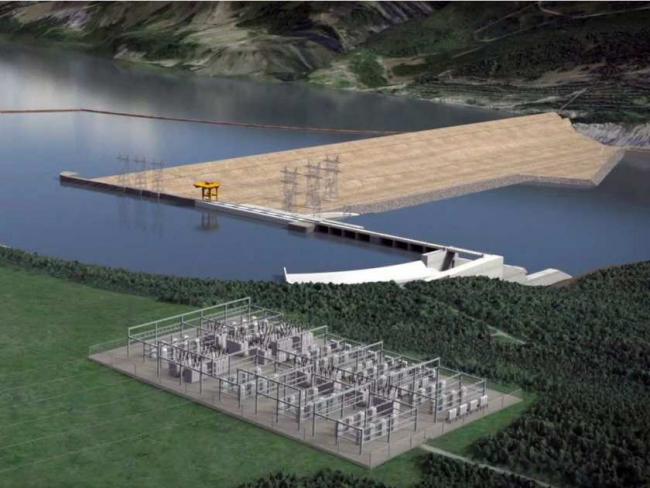Articles Menu

At a projected cost of $8.8 billon, the approved but yet-to-be-built Site C dam is the single most expensive public infrastructure project in B.C.’s history.
However, far more is at stake than just our pocketbooks when assessing the costs of Site C. So before returning to the appalling economics behind the project, consider the following:
If built, the dam would flood more than 100 kilometres of the Peace River’s forest and wetlands, and those of important tributaries including the Moberly and Halfway rivers. These lands are rich in wildlife and fisheries resources that have sustained the region’s First Nations people since time immemorial and they are subject to the terms of Treaty 8.
Are we comfortable with the knowledge that this project could have permanent, irreversible impacts on Indigenous rights that go far beyond the scope of any other industrial project underway or contemplated in B.C.? Certainly members of the West Moberly and Prophet River First Nations are not. They continue fighting the project in the courts, a legal battle most British Columbians remain oblivious to.
If built, Site C would also destroy more than 6,000 hectares of farmland. Almost as much land again falls within a “stability impact zone” that could subsequently slough into the dam’s reservoir.
Are we content to idly watch the single largest assault on B.C.’s Agricultural Land Reserve unfold? Ken and Arlene Boon certainly aren’t. Passionate critics of the project and third-generation Peace River valley farmers, the couple face imminent loss of their home and land.
If built, the Site C dam would take a deadly toll on local fish, animal and unique plant species. Will we be silent as the Peace River valley’s rich biological diversity — Interior B.C.’s equivalent to the Great Bear Rainforest — is lost forever? Certainly, the Tsay Keh Dene people living in the remote communities of Fort Ware and Ingenika will not. More than 50 years ago, their rivers and lands disappeared when the W.A.C. Bennett dam created the seventh-largest artificial body of water on earth. A water body now so poisoned with mercury that Indigenous people and anglers are still warned not to eat its fish.
But if dollars and cents are what move you, Site C means more dollars and makes no sense. Economists have said so. A former head of BC Hydro has said so. And, most recently, former Premier Mike Harcourt added his voice to the growing list of critics warning about Site C’s economic implications.
With major work on the dam not even started, our Hydro bills are already climbing well beyond inflation, in part because of costs coming due on repairs and upgrades at existing dams, and questionable investment decisions by BC Hydro. By 2018, we will pay nearly 30 per cent more for our power than we did in 2013.
Far greater increases await us as Site C’s costs come due. And you can count on those costs escalating. They have everywhere else.
In 2014, research published in the journal Energy Research and Social Science showed that of 61 hydroelectric projects analyzed worldwide, the average cost escalation was 70.6 per cent. Translation? Site C could be a $15-billion boondoggle.
Not a chance, you say? Tell that to the people of Newfoundland and Labrador who now face potential monthly hydro increases of $150 due to the more than $4 billion in projected added costs at the Muskrat Falls hydro project.
The same research, by the way, noted that large solar power installations had no such cost overruns and actually came in an average of $4.2 million less than projected.
These sobering findings come against an even more stunning backdrop: According to BC Hydro itself, Site C’s power may not be needed here for 20 to 40 years.
The day we might need more power is far off, while a host of other renewable energy options — wind, solar, geothermal, and low-impact pumped storage hydro — are largely dismissed by BC Hydro and its political masters.
B.C.’s next election looms in May. The governing party vows to push Site C past the point of no return. Meanwhile, the Opposition says it will refer the matter to the B.C. Utilities Commission for independent review, but has yet to say unequivocally whether it will allow it to proceed or kill it. Surely, it is time that this unprecedented project became a defining election issue.
Grand Chief Stewart Phillip is an Okanagan Indigenous leader and has been president of the Union of B.C. Indian Chiefs since 1998. Ben Parfitt is a resource policy analyst with the Canadian Centre for Policy Alternatives.
[Top photo: The Site C dam has been approved, but major construction has yet to begin. B.C HYDRO / PNG]